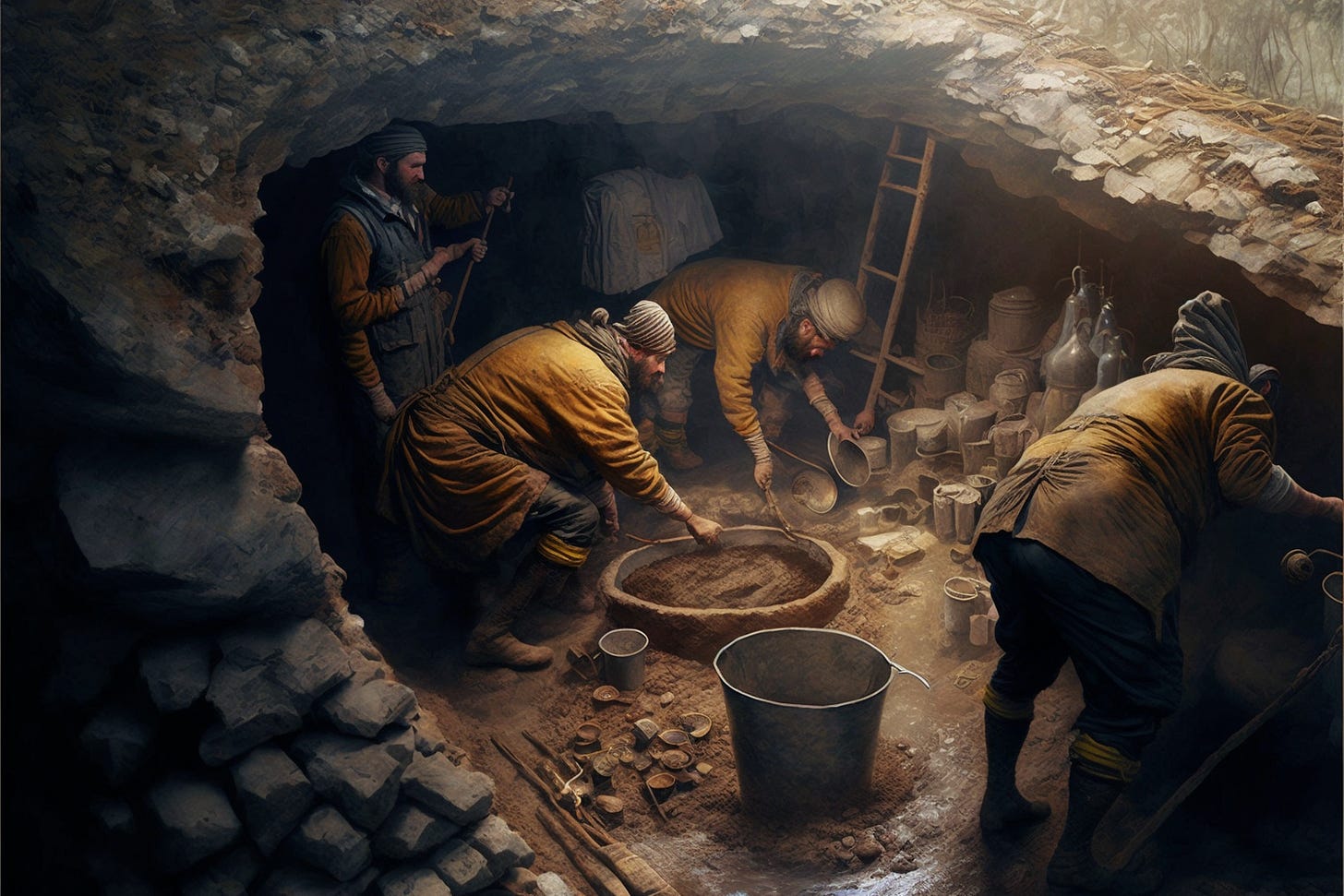🎓 Cleaning
Quick facts about historical cleaning methods from around the world, from lotus leaves to bronze knives.
I'm in the middle of merging the hosting infrastructure for the Iceberg with my other newsletter, the Obsidian Roundup. There are still some domain changes that need to happen, and the website is a bit in flux for now. Financial supporters of the Iceberg might see something wonky if they try to change their accounts for a week or two while I finalize the transition, but you will not be charged and things should continue as normal just with a slightly different name. More details to come next week, but while I'm still cleaning things up on the hosting end, here's some stuff I learned recently about, well, cleaning ;)
Quick Facts
Bathing in the leftover starchy water from cooking rice is a practice that goes back thousands of years. Scientists tested its usefulness as an anti-aging skill healing ingredient and I'm reading the study correctly, they found that it genuinely does have antioxidant activity and inhibits skin elasticity. It even helps heal damaged skin in dermatitis patients.
In sixteenth-century England, dirt was removed from clothes by smearing them with mud or scouring them with dung. There's speculation that the end of Roman style bathhouses in Europe happened because bathhouses began to be associated with filth and diseases like syphilis.
Self-cleaning leaves like those of the lotus plant have a rough waxy surface that makes them water repellant. The surface, made of lipids, can self-regenerate. The roughness leads to air gaps, which stop dirt particles from sticking to the surface, so when they get wet, the water washes away the dirt very easily. Not even glue can stick to lotus leaves.
Apparently, the Civil War marked a major turning point in the American 'obsession with cleanliness' and peaked in the 1950s.
The scent of an unwashed body was once considered an aphrodisiac; Napoleon, for example, explicitly wrote to his wife and told her to stop bathing when he was heading back to Paris after a campaign. Working up a sweat was considered by folks living in the "old French countryside" to be all the cleansing one really needed, and strong body odor was considered a sign of good health and sexual prowess.
Trash Heaps
Scientists mostly studden midden piles because the actual trash has lots of clues about historic lifestyles, but how people dispose of their garbage is interesting in its own right. Some Alaskan groups leave debris where they live, while the Pomo of Northern California deposited trash carefully downslope from their homes. Also, ritually breaking, scattering, and depositing debris from deconstructed buildings or ritual implements, for example, has deep meaning even though it's also about cleaning up after ourselves.
Urine Tax
Vespasian, a Roman emperor, probably taxed urine in the first century C.E. Urine contains ammonia, and back then, launderers used human and animal urine to clean togas. Urine is said to be useful in tanning as well, and thus the buyers of urine were taxed collected from public urinals. Somewhat more surprising, they also probably used ammonia from urine to bleach their teeth whiter.
Cleaning Bone
Bronze Age daggers were probably not actually used as non-functional status symbols. For a long time, scientists thought they were purely status symbols (like a gold sword with a hilt covered in jewels would be) because they thought the materials weren't strong enough to be effective weapons of choice. It turns out, though, that they're great for butchering carcasses, slaughtering livestock, and carving meat off the bone even if they aren't great weapons. There's still a lot of room for debate, but I like the idea of them being used as ritual livestock slaughtering tools for the wealthy that were occasionally also used as weapons in a pinch.
Pure Smell
Sulfur -- that's the one with the rotten-eggs stench -- was used to purify homes in Ancient Greece; it's even mentioned in Homer's Odyssey. It was utilized during the Middle Ages to purify plague-ridden homes, as well. Sulfur fumigation was also used in traditional Chinese medicine. Since it's an effective fungicide and pesticide, it's probably even reasonably effective at cleaning homes. It definitely works great at getting rid of mildew on peaches.
📗 If you found this interesting, you may also enjoy my previous newsletters about social signalling via status symbols, obscure taxes, antimicrobial bedding, or the history of sewers.
💚 If you learned something from this overview, consider forwarding it to a friend and encouraging them to sign up for more overviews of my research into obscure history and science.
🧽 Do you have a favorite story about weird cleaning methods? Please reach out — I'd love to hear about it, either via email or in a comment on the web version where other readers can see.



